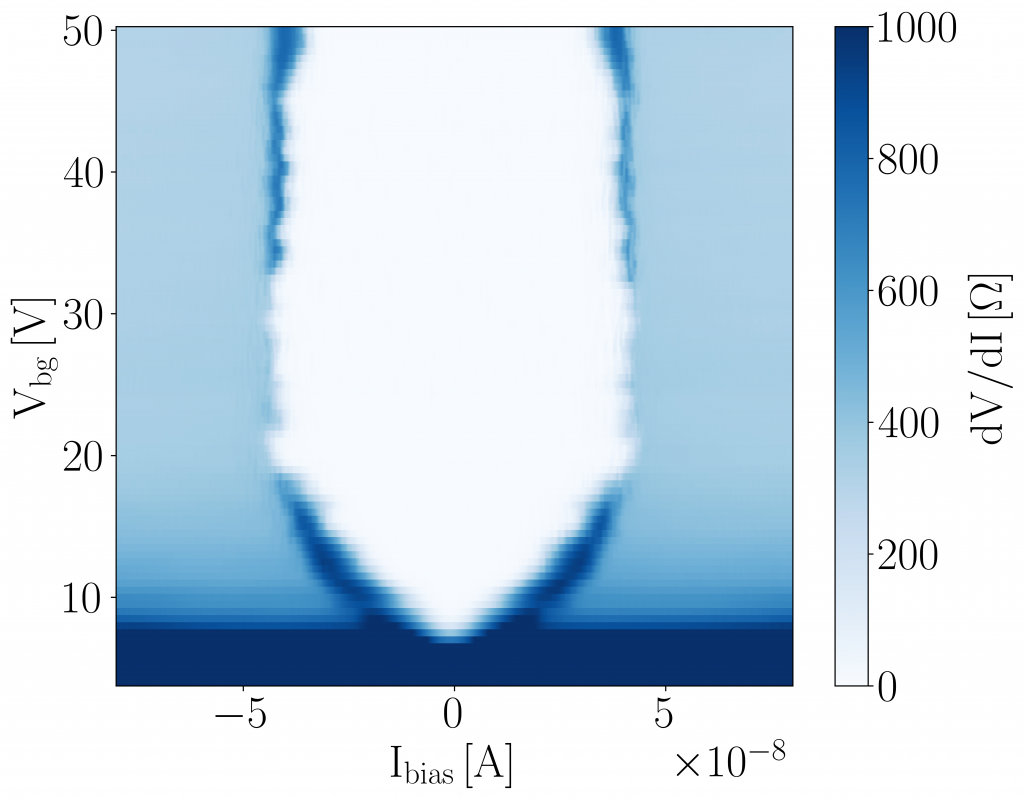High Mobility Free-Standing InSb Nanoflags for Quantum Technologies
High-quality III-V narrow band-gap semiconductor materials with strong spin-orbit coupling and large Landé g-factor provide a promising platform for next-generation applications in the field of optoelectronics, spintronics, and quantum computing. Indium antimonide (InSb) offers a narrow band gap, high carrier mobility, and a small effective mass, and thus perfectly fits to this scope. In fact, it has attracted tremendous attention in recent years for the implementation of topological superconducting states supporting Majorana zero modes. However, high quality heteroepitaxial two-dimensional (2D) InSb layers are very difficult to realize owing to the large lattice mismatch with other widespread semiconductor substrates. A solution to this problem is to grow free-standing single-crystalline 2D InSb nanostructures, so-called nanoflags. Indeed, this geometry allowed us fabricating Hall-bar devices with suitable length-to-width ratio and 10/190 nm Ti/Au contacts, enabling precise electrical characterization. As shown in Figure 1, we demonstrate a high electron mobility of ~29,500 cm2/(Vs) and a mean free path of 500 nm at 4.2 K.
 Figure 1: Mobility and charge carrier density obtained from Hall measurements. Inset shows the SEM image of an InSb nanoflag Hall-bar device.
Figure 1: Mobility and charge carrier density obtained from Hall measurements. Inset shows the SEM image of an InSb nanoflag Hall-bar device.
We have also successfully fabricated ballistic Josephson junction devices with 10/150 nm Ti/Nb contacts that show gate-tunable proximity-induced supercurrent (~50 nA at 300 mK, see Figure 2). The devices also show clear signatures of subharmonic gap structures, indicating phase-coherent transport in the junction. Our study places InSb nanoflags in the spotlight as a versatile and convenient 2D platform for advanced quantum technologies.
 Figure 5: Differential resistance dV/dI of an InSb-based Josephson junction versus current bias Ibias and backgate voltage Vbg.
Figure 5: Differential resistance dV/dI of an InSb-based Josephson junction versus current bias Ibias and backgate voltage Vbg.
Publications:
- Isha Verma, Sedighe Salimian, Valentina Zannier, Stefan Heun, Francesca Rossi, Daniele Ercolani, Fabio Beltram, and Lucia Sorba: High-mobility free-standing InSb nanoflags grown on InP nanowire stems for quantum devices, arXiv:2111.03052 [cond-mat.mes-hall].
- Isha Verma, Sedighe Salimian, Valentina Zannier, Stefan Heun, Francesca Rossi, Daniele Ercolani, Fabio Beltram, and Lucia Sorba: High-mobility free-standing InSb nanoflags grown on InP nanowire stems for quantum devices, ACS Appl. Nano Mater. 4 (2021) 5825 – 5833.
- Sedighe Salimian, Matteo Carrega, Isha Verma, Valentina Zannier, Michal P. Nowak, Fabio Beltram, Lucia Sorba, and Stefan Heun: Gate-controlled Supercurrent in Ballistic InSb Nanoflag Josephson Junctions, arXiv:2111.01695 [cond-mat.mes-hall].
- S. Salimian, M. Carrega, I. Verma, V. Zannier, M. P. Nowak, F. Beltram, L. Sorba, and S. Heun: Gate-controlled supercurrent in ballistic InSb nanoflag Josephson junctions, Appl. Phys. Lett. 119 (2021) 214004. [Most Read Editor’s Picks 2020-2021]
- Isha Verma: InSb nanostructures: growth, morphology control and transport properties, PhD thesis, Scuola Normale Superiore di Pisa, Italy Pisa, 2022.
- Free-standing InSb nanoflags for quantum device applications, Cnr Nano Activity Report 2022. [Pages 56-57]
- K. Kaperek, S. Heun, M. Carrega, P. Wójcik, M. P. Nowak: Scanning gate microscopy imaging of the supercurrent distribution in a planar Josephson junction, arXiv:2203.08587 [cond-mat.mes-hall].
- K. Kaperek, S. Heun, M. Carrega, P. Wojcik, and M. P. Nowak: Theory of scanning gate microscopy imaging of the supercurrent distribution in a planar Josephson junction, Phys. Rev. B 106 (2022) 035432.
Presented at:
- S. Heun: High mobility free-standing InSb nanoflags for advanced quantum technologies, AGH University of Science and Technology, Krakow, Poland (Dr. M. P. Nowak), 19 May 2021. [Abstract] [Talk]
- S. Salimian, M. Carrega, I. Verma, V. Zannier, F. Rossi, D. Ercolani, F. Beltram, L. Sorba, and S. Heun: High mobility free-standing InSb nanoflags for quantum technology, CMD 20 online series Bound states in hybrid superconductor nanostructures, 28 – 29 June 2021 (oral). [Abstract] [Talk]
- Isha Verma, Valentina Zannier, Sedighe Salimian, Stefan Heun, Francesca Rossi, Daniele Ercolani, Fabio Beltram, and Lucia Sorba: Morphology control and electrical characterization of free-standing InSb nanostructures, 21st International Conference on Molecular Beam Epitaxy, Virtual Conference, Mexico, September 6-9, 2021 (oral). [Abstract] [Talk]
- Isha Verma, Sedighe Salimian, Valentina Zannier, Stefan Heun, Francesca Rossi, Daniele Ercolani, Fabio Beltram, and Lucia Sorba: Morphology control and electrical characterization of free-standing InSb nanostructures, EUROMAT 2021, virtual conference, 13-17 September 2021 (oral). [Abstract] [Talk]
- Isha Verma, NEST – National Enterprise for nanoScience and nanoTechnology, Italy: High-Mobility Free-Standing InSb Nanoflags grown on InP Nanowire Stems for Quantum Devices, Raith Micrograph Award 2021, Honorable Mention 2021
- Stefan Heun: High-Mobility Free-Standing InSb Nanoflags for Quantum Technologies, NANO COLLOQUIA 2022, 20 January 2022. [Abstract] [Talk] [Video]
- Isha Verma, Valentina Zannier, Sedighe Salimian, Stefan Heun, Francesca Rossi, Daniele Ercolani, Fabio Beltram, and Lucia Sorba: Free-standing InSb nanoflags for quantum device applications, Nanowire Week 2022, Chamonix, France, 25 – 29 April 2022 (oral). [Abstract] [Talk]
- Isha Verma: InSb nanostructures: Growth, Morphology control and transport properties, PhD defense talk, Scuola Normale Superiore, Pisa, Italy, 27 May 2022 (oral). [Talk]
- Valentina Zannier, Isha Verma, Sedighe Salimian, Stefan Heun, Francesca Rossi, Daniele Ercolani, Fabio Beltram, and Lucia Sorba: Free-standing InSb nanostructures: growth, morphology control and electrical characterization, E-MRS 2022Fall Meeting, Warsaw, Poland, September 19 – 22, 2022 (invited). [Abstract] [Talk]